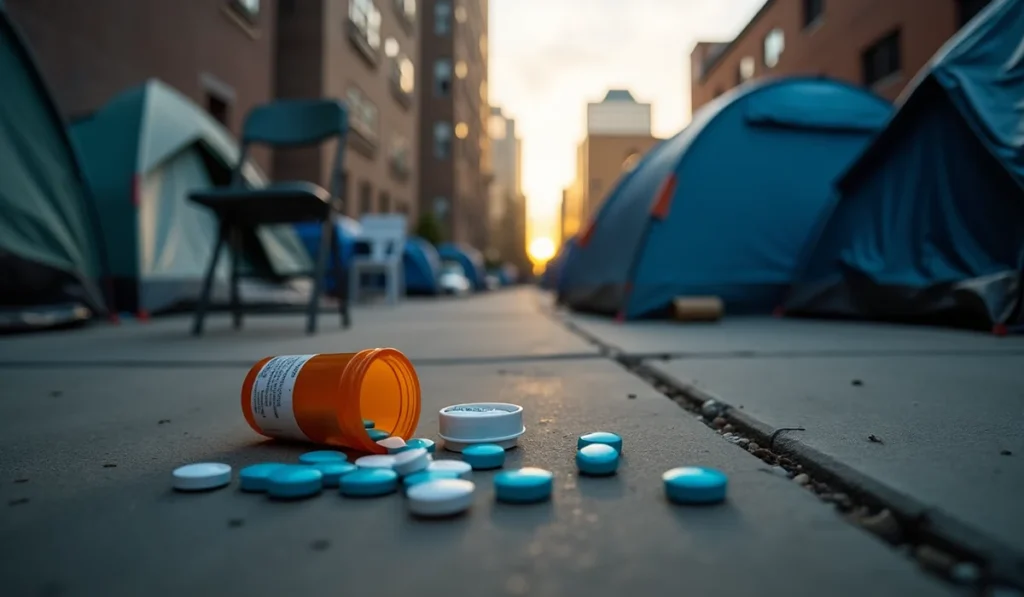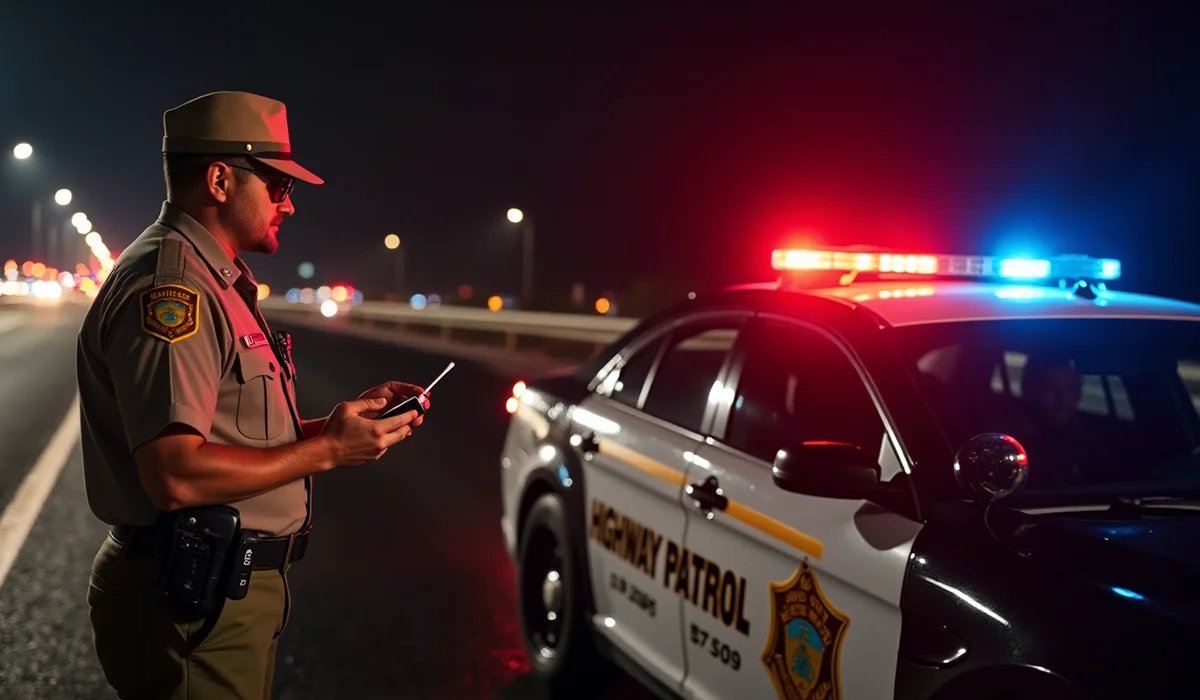Utah faces a drug crisis that’s worse than ever before. The state stands out for all the wrong reasons. While overdose deaths dropped 24% across the country in 2024, Utah was among all but one of these states where deaths actually went up by 5%. The numbers paint a grim picture that concluded in 2023 with the state’s worst year on record—606 lives lost, 290 of them due to fentanyl.
The depth of Utah’s substance abuse crisis becomes clear through stark numbers. Law enforcement seized 4.7 million doses of fentanyl in 2024, compared to just 49,000 doses in 2020. Drug overdose has become Utah’s leading cause of injury deaths and ranks in the top 10 causes of death statewide. The crisis hits the homeless population particularly hard. Overdose remains their biggest threat, causing 35% of the 216 homeless deaths in 2023. The situation grows more complex as new dangers surface beyond fentanyl. Officials worry about rising benzodiazepine abuse that creates what they call a “deadly cocktail” when mixed with opioids.
Utah Officials Warn of Record-High Drug Crisis
Utah state officials raised the alarm about substance abuse statistics that show a crisis unlike anything seen before, which doesn’t match national trends. Top leaders gathered at Cottonwood Park along the Jordan River Trail to share troubling data and tough measures against what they see as a growing threat.
Governor and law enforcement statements
Governor Spencer Cox started a dedicated Utah Fentanyl Task Force in October 2024. He pointed to what he called “absolutely skyrocketing” numbers of fentanyl seizures throughout the state. The task force wants to cut drug overdoses by 25% before 2029.
“What might seem like a distance problem is getting closer to home than many realize,” Cox stated during the announcement. “Fentanyl is affecting all walks of life, from parents to professionals. Now, these are not just statistics. They’re our neighbors, our parents, workers, friends and even our kids”.
Cox stressed that the problem exists everywhere in the state. “I don’t care what size your town is, the smallest towns in Utah are being impacted by fentanyl. The wealthiest neighborhoods in Utah are being impacted by fentanyl”.
The governor picked Utah Department of Public Safety Commissioner Jess Anderson to lead the task force. Their strategy has three main goals: “to reduce demand through prevention and treatment, address root causes of fentanyl abuse and disrupt fentanyl trafficking networks”.
FBI Assistant Special Agent in Charge Rhys Williams shared these worries and put it bluntly: “Here in Utah, we’re seeing a tremendous amount of fentanyl! Yes, the tsunami has struck for sure!”. Williams said the drug is “everywhere, it’s in our schools, our universities, and our colleges across the country”.
Law enforcement has seen huge jumps in seizures. State troopers found just 1,600 doses of fentanyl in 2018. This number grew to about 15,000 by 2020 and jumped to nearly 2 million last year. The FBI works more closely with local task forces now. Williams explained: “We are hyper-focused on gangs and drugs because of the effect that it has on our communities”.
CDC overdose data highlights Utah’s outlier status
The Centers for Disease Control and Prevention (CDC) data shows Utah among just five states—with Alaska, Montana, Nevada, and South Dakota—that saw more overdose deaths while the rest of the nation saw fewer deaths. Public health officials say this difference means Utah needs “rapid local data and tailored response”.
The numbers tell a clear story. The nation saw 24% fewer overdose deaths from 2023 to 2024, but Utah’s deaths went up by 5%. Utah saw its deadliest year ever for drug overdoses, and health department data shows:
- Fentanyl leads as the most common drug in overdose deaths in Utah
- Fentanyl-related deaths rose by 1160.9% from 2014 to 2023
- Fentanyl played a role in 47.9% of all drug overdose deaths in 2023
The Utah Department of Health and Human Services (DHHS) warned that “the sharp increase in the number of fentanyl-involved deaths outpaces reductions in deaths from prescription opioids”. Officials believe that “we will likely see an increase in the drug overdose death rate if this trend continues”.
Representative Matthew Gwynn spoke about the human cost during an emotional legislative session. “Over 600 times last year in the state of Utah, someone came home and found their son, daughter or parent deceased from an opioid overdose”. He added, “Unlike the rest of the nation, where fentanyl deaths are declining, that’s not holding true for the state of Utah”.
Fentanyl and Super Meth Flood Utah Streets
The numbers paint a frightening picture of narcotics flooding Utah’s streets. Drug seizures have hit record levels, and law enforcement officials say Utah’s role in the national drug trade has completely changed.
Seizure statistics from 2020-2025
Utah’s fentanyl seizures tell a shocking story. Task forces of the Rocky Mountain High Intensity Drug Trafficking Area seized just over 49,000 dosage units of fentanyl in 2020. The numbers jumped sevenfold to 330,000 units in 2021, then shot up to 1.5 million in 2022. This upward trend didn’t stop – seizures doubled to 3.4 million in 2023 before hitting 4.7 million in 2024, a ninety-five-fold increase in just four years.
The numbers keep climbing faster. Utah Highway Patrol and the State Bureau of Investigation have already matched 2024’s entire yearly seizures in just the first four months of 2025. One narcotics task force had seized as many fentanyl pills by mid-2024 as their total haul for 2023.
The DEA’s Rocky Mountain Field Division broke records in 2024. They seized nearly 800,000 fentanyl pills in Utah in just six months – beating 2023’s record by more than 16.5%.
These pills have become deadlier too. About 40% of fentanyl pills contained a lethal dose in 2020. This number jumped to 70% by 2024. Just two milligrams can kill someone without opioid tolerance.
“Super meth” has become another major threat. This P2P methamphetamine often contains fentanyl. DEA agents say four out of every ten fake pills they seize now contain lethal doses of methamphetamine, fentanyl, or both.
Shift from transit state to destination market
Utah has changed from a drug corridor to a final destination market. Utah Department of Public Safety Commissioner Jess Anderson noted that half the fentanyl seized in 2024 was meant for Utah markets rather than passing through.
“Either we’ve got a demand issue going on here in Utah that we were not aware of… or we’ve got more of a cartel issue than what we would like to admit,” Anderson stated.
This marks a big change from Utah’s past role. A Justice Department assessment in 2021 saw Utah mainly as a throughway between drug sources and destinations. By 2025, state police found that all fentanyl seizures on Utah’s interstates were headed into the state.
The Sinaloa and Jalisco New Generation cartels now run Utah’s fentanyl trade. They use Interstates 15 and 80, which make Salt Lake City a hub for western drug trafficking. Most seizures happen between St. George and Salt Lake City.
Prices show how enforcement efforts affect the market. Fentanyl pills cost pennies to make (USD 0.02-0.04 each). Their street price has gone up from USD 1.00 to USD 10.00 per pill as police disrupt key distribution areas. Rural areas see even higher prices. Pills sell for USD 5.00-6.00 in Salt Lake City but can cost up to USD 60.00 in Montana.
Dealers now use social media platforms like Facebook, Instagram, Snapchat, and TikTok to advertise and arrange pickups. This brings these deadly drugs into even the smallest communities.
New Drug Threats Emerge Beyond Fentanyl
Utah’s drug crisis extends beyond fentanyl headlines. Health experts now warn about other dangerous substances taking root in the state. This creates fresh challenges for public health officials and law enforcement.
Rise of benzodiazepine abuse
Benzodiazepines have become a major threat among other issues in the opioid epidemic. These prescription medications commonly treat anxiety and insomnia. Emergency department visits related to benzodiazepines jumped by 23.7% between 2019 and 2020, showing a concerning pattern.
The death toll tells an even grimmer story. CDC data reveals deaths from illicit benzodiazepines shot up by 519.6% from April-June 2019 to April-June 2020. Deaths linked to prescription benzodiazepines rose by 21.8% during this time. Opioids played a role in almost 93% of benzodiazepine deaths in January-June 2020. These mainly involved illicitly manufactured fentanyl.
“There’s increased availability and increased access, not just through prescriptions but through illicit sources,” said Dr. Anna Lembke, medical director of addiction medicine at Stanford University. Benzodiazepine prescriptions had already climbed 67% between 1996 and 2013.
Dr. Sumit Agarwal from Brigham and Women’s Hospital explains, “Just overall, benzodiazepines are very easy to start but very hard to stop.” These medications pose a unique risk because users and some doctors underestimate their addictive nature.
Synthetic drug variants complicate enforcement
Law enforcement faces new challenges from emerging synthetic substances. Xylazine, known as “Tranq” on the streets, has infiltrated Utah’s drug supply. This large animal tranquilizer makes fentanyl’s effects last longer but causes severe side effects like tissue necrosis. Naloxone (Narcan) doesn’t work well against overdoses with this combination because xylazine isn’t an opioid.
Officials have warned that dealers mix fentanyl with marijuana, cocaine, heroin, and methamphetamine. Their advice: “assume fentanyl is in everything.”
Synthetic cannabinoids create another enforcement hurdle. Utah’s Department of Agriculture & Food wants legislation to ban these substances from medical marijuana products in the state. These cannabinoids appear often in cannabis extracts, but nobody knows if they’re safe. One official put it simply: “There’s really no studies, there’s really nothing we can go after to say this is safe, this isn’t.”
Utah changed its Controlled Substances Act to tackle synthetic drugs called “spice” and “bath salts.” These substances can trigger hallucinations, racing heart rate, paranoia, violence, seizures, and kidney failure.
The illicit drug threat landscape keeps changing faster. This calls for more flexible enforcement strategies and better public awareness about these emerging dangers.
Lawmakers Launch Aggressive Countermeasures
Utah’s drug crisis has pushed state lawmakers to take bold steps against deadly narcotics spreading throughout the state.
New laws targeting fentanyl traffickers
Governor Spencer Cox signed House Bill 87 this spring, which makes fentanyl trafficking a first-degree felony. The bill received strong support from both House and Senate members. This groundbreaking law targets anyone caught with 100 grams or more of fentanyl and comes with harsh penalties:
- Fines up to $10,000
- Prison sentences ranging from five years to life
- Limited court options for probation
“This bill addresses the alarming rise in fentanyl-related deaths,” noted Representative Matthew Gwynn, R-Farr West, who emphasized that “at least one Utahn will die from an overdose today, whether it be a toddler who finds a pill or an addict in recovery who relapses”.
Both legislative chambers approved the law unanimously. Commissioner Jess Anderson made the stakes clear: “If you’re caught with fentanyl, 100 grams or more, we will treat you as if you are coming to our communities trying to kill our people”.
Forced detox initiatives for homeless populations
Lawmakers have also changed their approach to homelessness. They now realize that substance abuse often makes traditional housing-first strategies ineffective. Two more bills—HB199 and HB329—passed without opposition and set stricter rules:
HB199 helps first responders connect overdose survivors with treatment resources. HB329 requires shelters to maintain zero-drug policies. These laws take effect May 7th.
Specialists have completely changed their thinking about homelessness solutions. Research from the hardest-hit communities suggests using jail time as a forced detox period. Commissioner Anderson believes law enforcement needs more resources “to break the cycle” by helping people get sober “in a humane way,” possibly through 30-day jail stays.
One expert explained the harsh reality: “The problem is now, if you leave people on the street to find readiness to hit rock bottom, meth will drive them mad, and fentanyl will kill them before any readiness for treatment ever takes place”.
How Utah’s Drug Problem Could Evolve Next
Utah faces a drug crisis, and experts highlight two key factors that will determine how substance abuse evolves across the state.
Potential cartel influence
Mexican cartels have expanded their presence in Utah at an alarming rate. The Sinaloa and Jalisco New Generation (CJNG) cartels now dominate the fentanyl trade throughout the state. They take advantage of Utah’s location along major drug routes—especially Interstates 15 and 80.
Salt Lake City has become a hub for western drug trafficking. Most drug seizures happen between St. George and Salt Lake City. Law enforcement reports a concerning change in how cartels work. They’ve moved away from strict hierarchies and now let semi-autonomous leaders run their own territories.
“You’re going to see a lot coming up out of Los Angeles up I-15 into Utah. That’s a big pathway for the Sinaloa Cartel; they control the pathway into southern California,” explained DEA officials. The money involved remains enormous—pills cost pennies to make (USD 0.02-0.04) but sell for USD 5.00-6.00 in Salt Lake City and up to USD 60.00 in Montana.
Drug dealers now use social media as their marketplace. Facebook, Instagram, Snapchat, and TikTok help advertise and arrange pickups. Commissioner Anderson noted, “Either we’ve got a demand issue going on here in Utah that we were not aware of… or we’ve got more of a cartel issue than what we would like to admit”.
Community-driven prevention strategies
Utah has developed resilient community-centered prevention approaches. The Office of Substance Use and Mental Health supports evidence-based prevention models that follow five simple phases from the Strategic Prevention Framework.
These prevention efforts show impressive results—every USD 1.00 invested saves USD 18.00 in public funds. The Utah Evidence-Based Workgroup identifies effective substance use disorder prevention programs. They focus on:
- Education and outreach initiatives
- Coalition building and community involvement
- Parenting and family management classes
- Life skills development and job training
Governor Spencer Cox points to deeper social issues behind drug use: “Part of the problem is it’s more than just access to drugs or the drugs themselves, it’s the loneliness epidemic that’s happening in our country”.
Utah has secured significant resources for prevention, including USD 543 million in settlement money to curb the opioid epidemic over the next 15 years. The state has received USD 81 million and used USD 14.5 million so far.
“We want there to be thoughtfulness,” explained officials overseeing the funds. “We really want these dollars to be spent well, and there to be transparency and accountability”. They emphasized that “all of these areas are going towards the goals of the settlements, which are to ameliorate the harms of the opioid crisis… as well as to prevent future harms”.
Conclusion
Utah faces a unique drug crisis that goes against national patterns. Other states see their overdose numbers drop, but our communities watch drug-related deaths climb to new heights – 606 lives were lost in 2023. Fentanyl seizures have grown 95 times larger in just four years. Utah has changed from a pass-through state to a destination for deadly drugs.
The numbers tell a grim story. Fentanyl makes headlines, but new threats like benzodiazepine abuse and synthetic drug variants make enforcement harder. This changing situation led state lawmakers to take tough action. They made fentanyl trafficking a first-degree felony and created stricter rules for homeless people who struggle with addiction.
Our state leaders know this isn’t just about law enforcement. Governor Cox pointed to the “loneliness epidemic” that drives substance abuse. We just need to tackle both the supply and the people who use these drugs. The Utah Evidence-Based Workgroup now focuses on prevention strategies that start in communities. These efforts pay off well – every dollar spent saves $18 in public money.
The next few years will test our state’s strength. Mexican cartels keep growing their presence in Utah and use our location on major drug routes. In spite of that, we’ve secured substantial resources for prevention, including $543 million in settlement money to curb the opioid crisis over 15 years. These funds, combined with greater public awareness and support from both political parties, give us hope. Utah can turn this deadly trend around even with today’s challenges.





